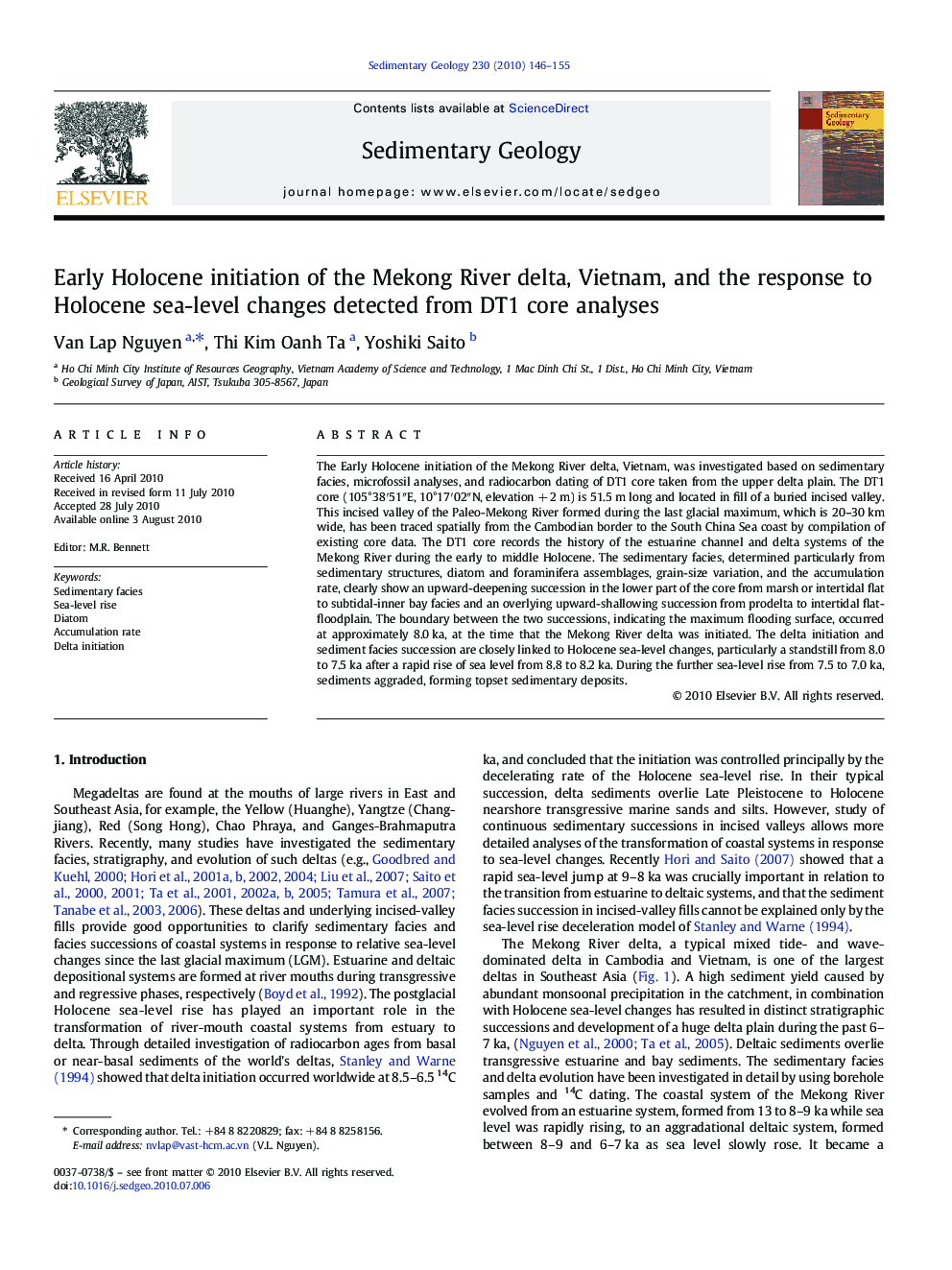| Article ID | Journal | Published Year | Pages | File Type |
|---|---|---|---|---|
| 4689940 | Sedimentary Geology | 2010 | 10 Pages |
Abstract
The Early Holocene initiation of the Mekong River delta, Vietnam, was investigated based on sedimentary facies, microfossil analyses, and radiocarbon dating of DT1 core taken from the upper delta plain. The DT1 core (105°38â²51â³E, 10°17â²02â³N, elevation + 2 m) is 51.5 m long and located in fill of a buried incised valley. This incised valley of the Paleo-Mekong River formed during the last glacial maximum, which is 20-30 km wide, has been traced spatially from the Cambodian border to the South China Sea coast by compilation of existing core data. The DT1 core records the history of the estuarine channel and delta systems of the Mekong River during the early to middle Holocene. The sedimentary facies, determined particularly from sedimentary structures, diatom and foraminifera assemblages, grain-size variation, and the accumulation rate, clearly show an upward-deepening succession in the lower part of the core from marsh or intertidal flat to subtidal-inner bay facies and an overlying upward-shallowing succession from prodelta to intertidal flat-floodplain. The boundary between the two successions, indicating the maximum flooding surface, occurred at approximately 8.0 ka, at the time that the Mekong River delta was initiated. The delta initiation and sediment facies succession are closely linked to Holocene sea-level changes, particularly a standstill from 8.0 to 7.5 ka after a rapid rise of sea level from 8.8 to 8.2 ka. During the further sea-level rise from 7.5 to 7.0 ka, sediments aggraded, forming topset sedimentary deposits.
Related Topics
Physical Sciences and Engineering
Earth and Planetary Sciences
Earth-Surface Processes
Authors
Van Lap Nguyen, Thi Kim Oanh Ta, Yoshiki Saito,
